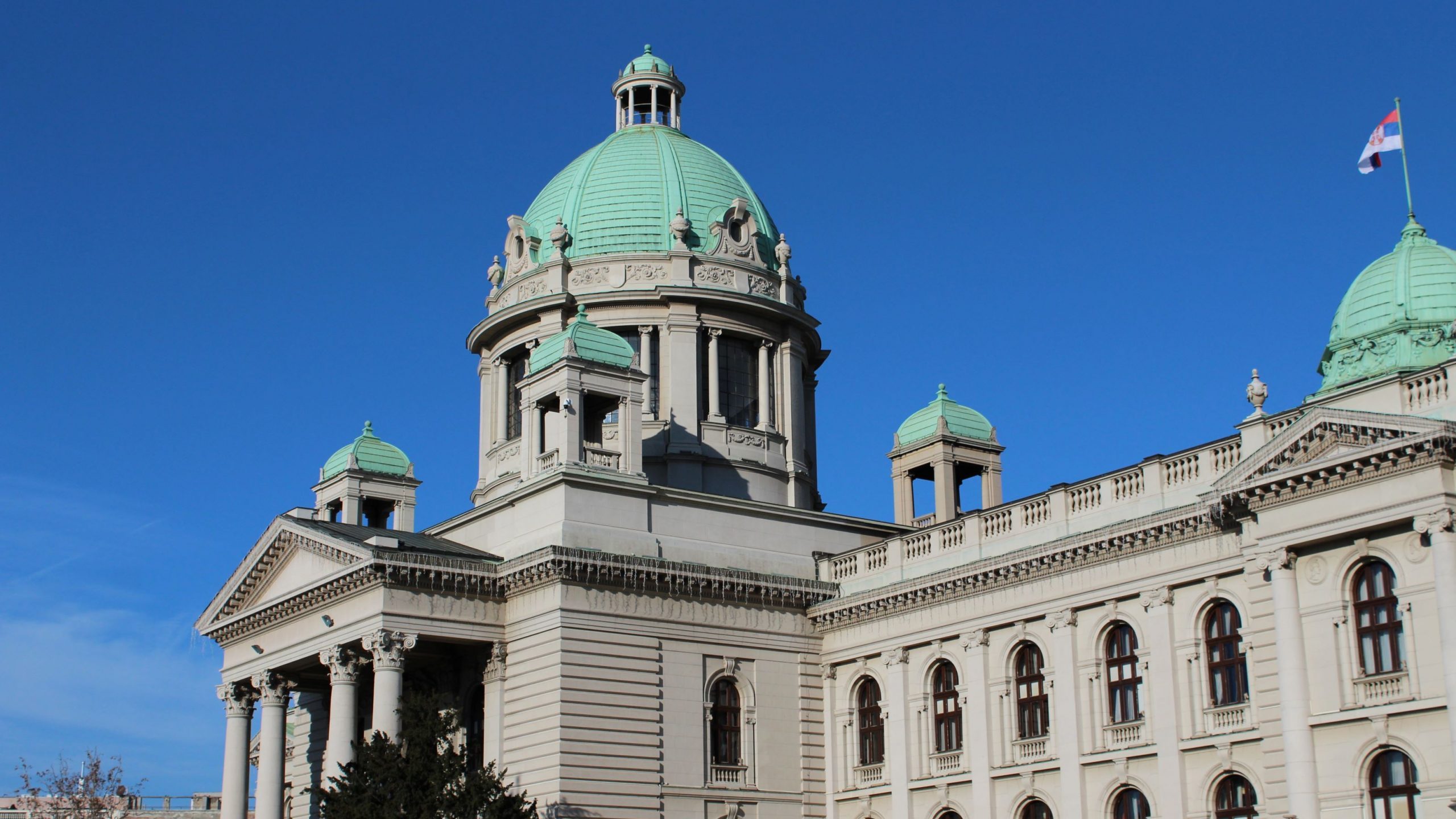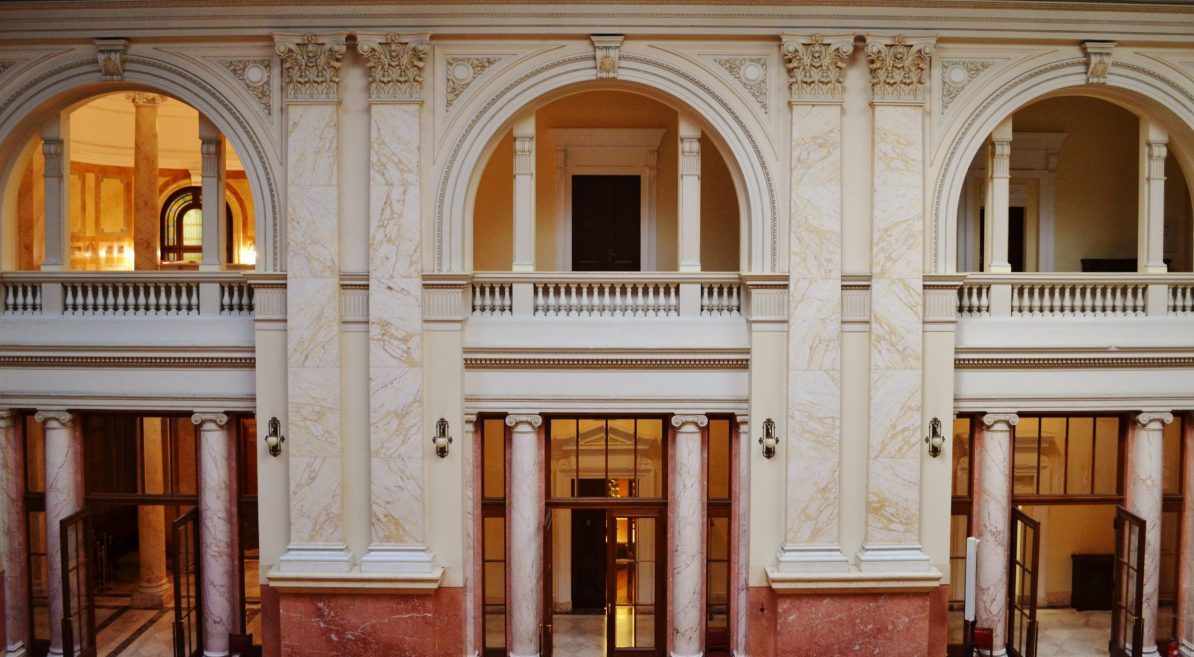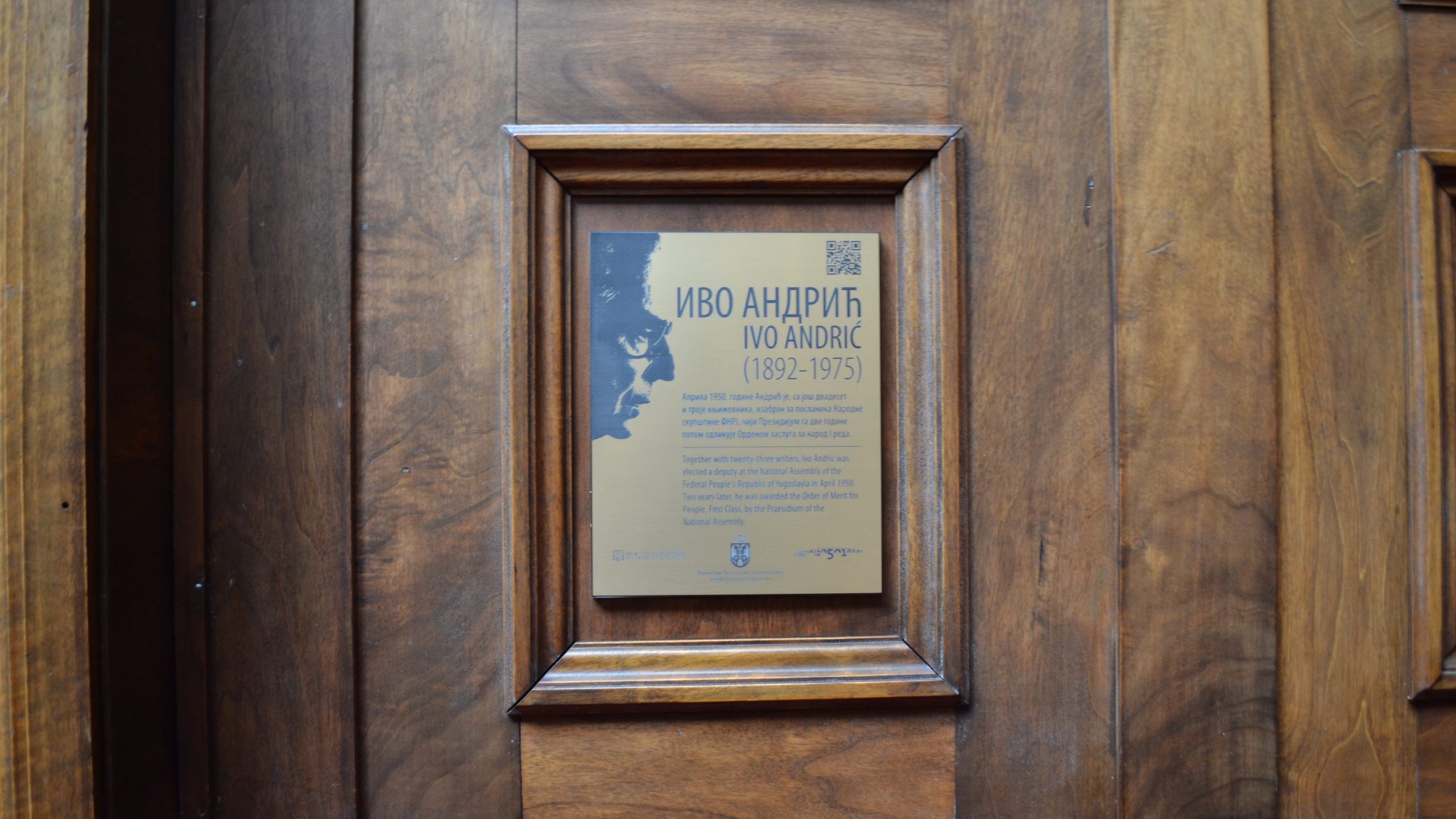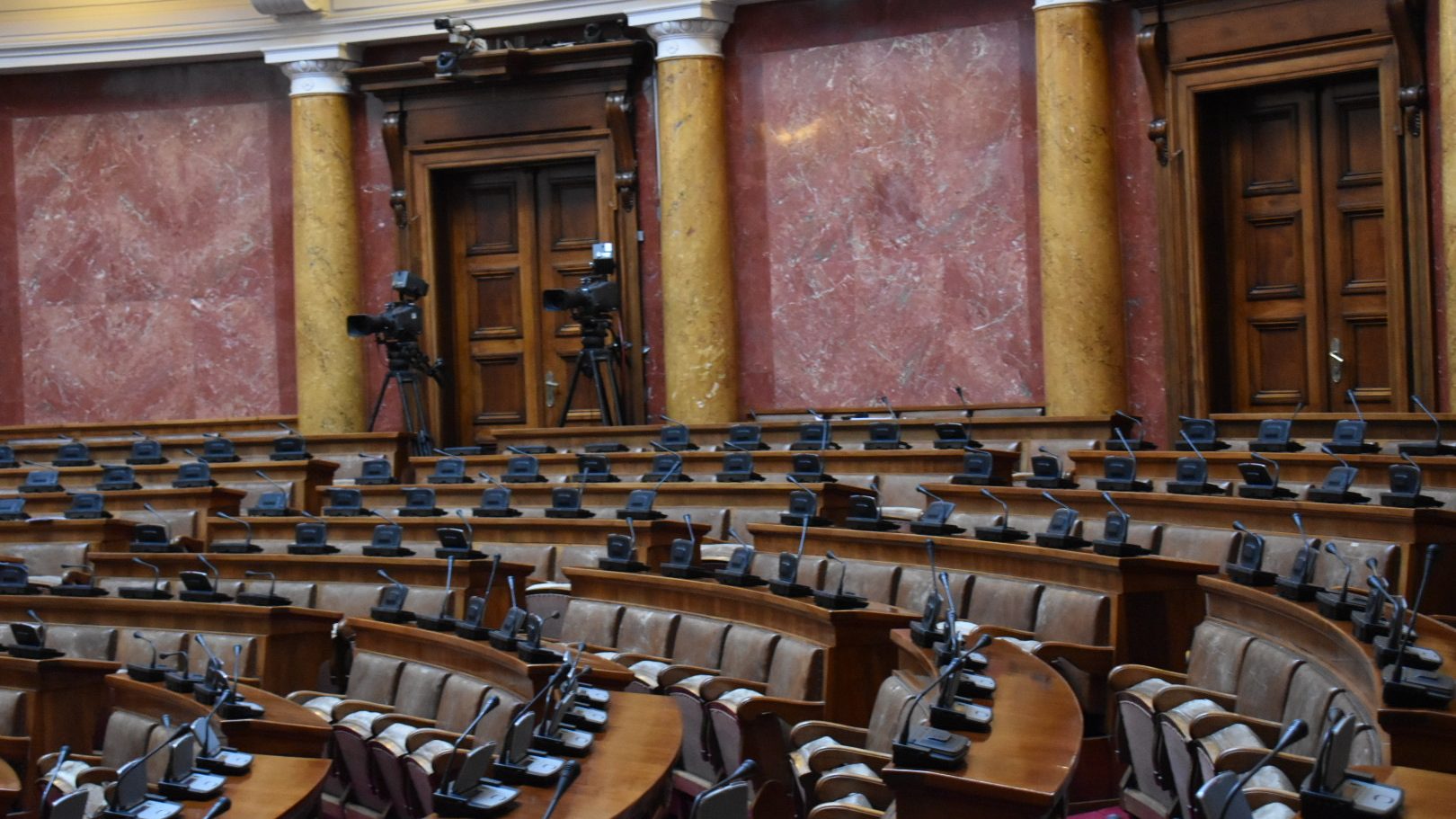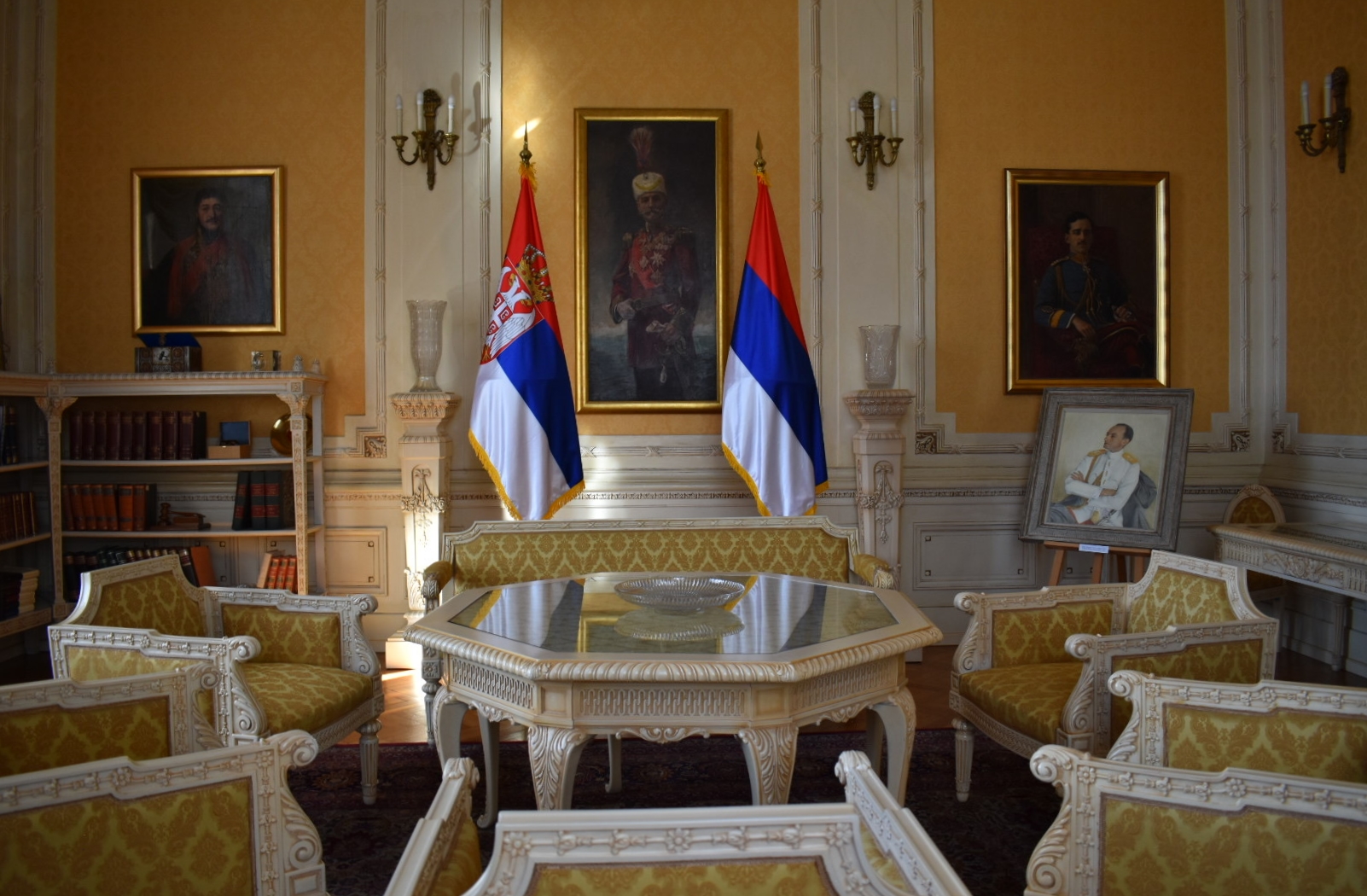WHERE IS IT?
Nikola Pasic Square 13, district Stari grad
In the vicinity of The Pionir park, Old Palace/City Assembly Of Belgrade and New Palace/President Of The Republic Of Serbia.
THE HISTORY
Konstantin Jovanović was the first architect to be entrusted with making the first plans for the construction of the National assembly in 1892. He made the plans for a one party parliament. After the constitution started being used, the Monarchy of Serbia got a two party parliament, so these plans were not usable anymore. In 1901. Jovan Ilkić became the new head architect, making a plan similar to Jovanović’s, the only difference being the order of rooms. Construction began in 1907, however it was interrupted - the Balkan wars, as well as the First world war, greatly delayed the process of building the National assembly. In 1920. The job of finishing off the building fell onto Pavle Ilkić, the son of the previous architect. In 1926, The construction was, once again delayed due to lack of resources. The next phase begun in 1934. When Nikolaj Krasnov, a Russian architect, had taken charge. The National Assembly was finished on the 18th October 1936.
The first session of parliament was held on the 20th October that same year.

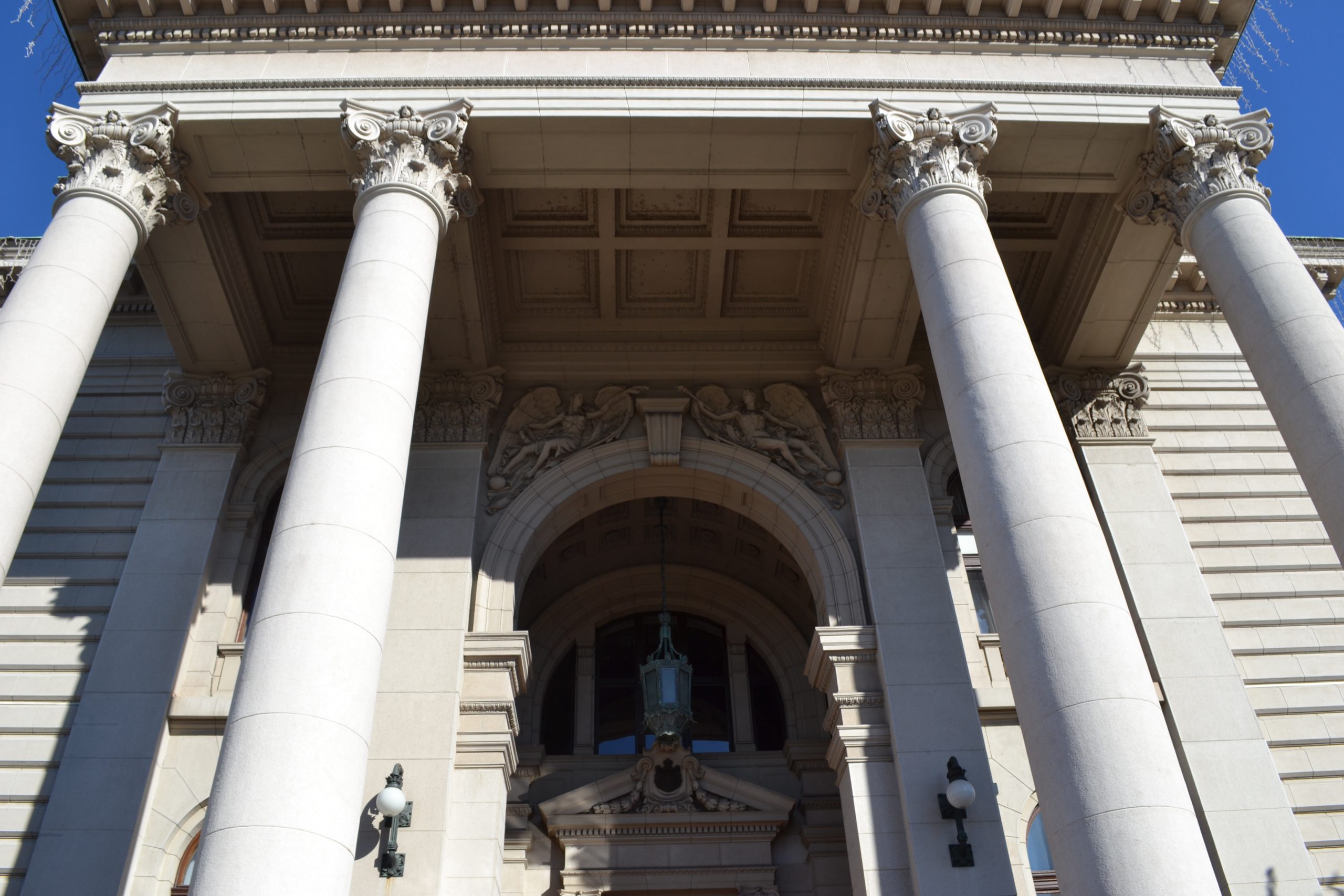

EXTERIOR
The building of the National assembly is one of the most monumental in Belgrade. It was designed in academic style , with dominant decorative-architectural elements of Italian renaissance. The central part of the building is emphasized with the entrance portico with classicistic triangular tympanums supported by four Corinthian columns,
The side wings both end with domes on each side. The central part of the building is emphasized with a monumental staircase along with big decorative sculptural groups in bronze, the work of sculptor Toma Rosandić, called “Black Stallions Playing"(1938)
INTERIOR
- Inside the building, there are various art’s form equally represented: architecture, sculpture, interior design (furniture, lighting, curtains, carpets and other details) totally designed by Nikolaj Krasnov.
The most meaningful rooms in the National assembly are:
1. The entryway
2. The main hall
3. The small hall
4. The central lobby
5. Four committee halls
6. The library
7. The diplomatic salon
8. The cabinets
VESTIBUL
The entrance hall or vestibule is the first representative space at the entrance of the National Assembly. Above the polygonal base rises a richly decorated octagonal dome. The light that passes through the glass construction illuminates the monumental space decorated with multicolored marble cladding. In the vestibule there are four statues, depicting important historical figures. The statue of emperor Dušan, sculptor Dragutin Filipović from 1937, made of marble, is especially recognizable. A bronze replica of this statue is located in front of the Palace of Justice. The second statue, of the Serbian hero Karadjordje, was made in marble by sculptor Frano Kršinić in 1938. The statue of the Croatian ruler King Tomislav was carved by sculptor Vanja Radauš in 1937, and the statue of the Slovenian medieval prince Kocelj was made by sculptor Tine Kos in 1937.


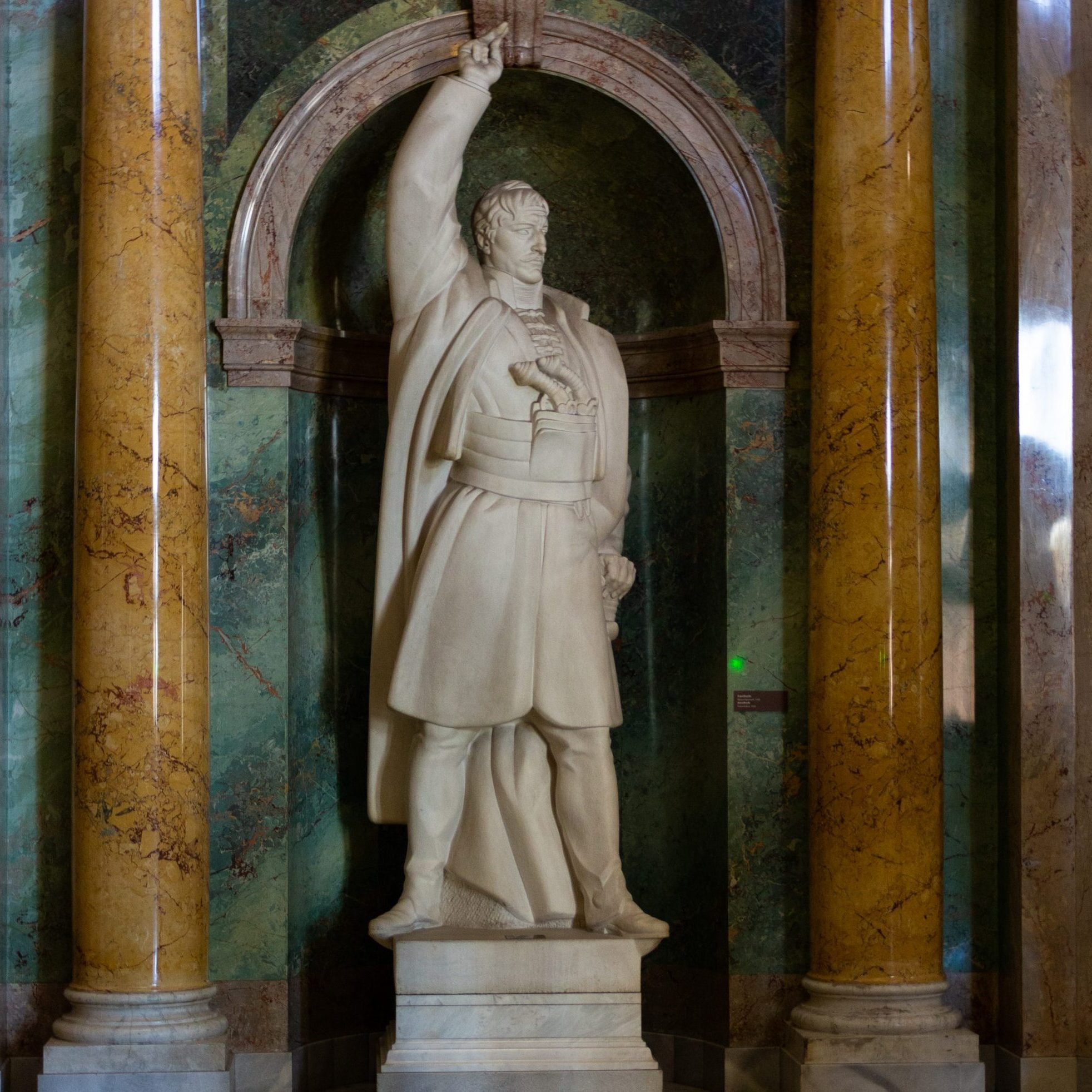


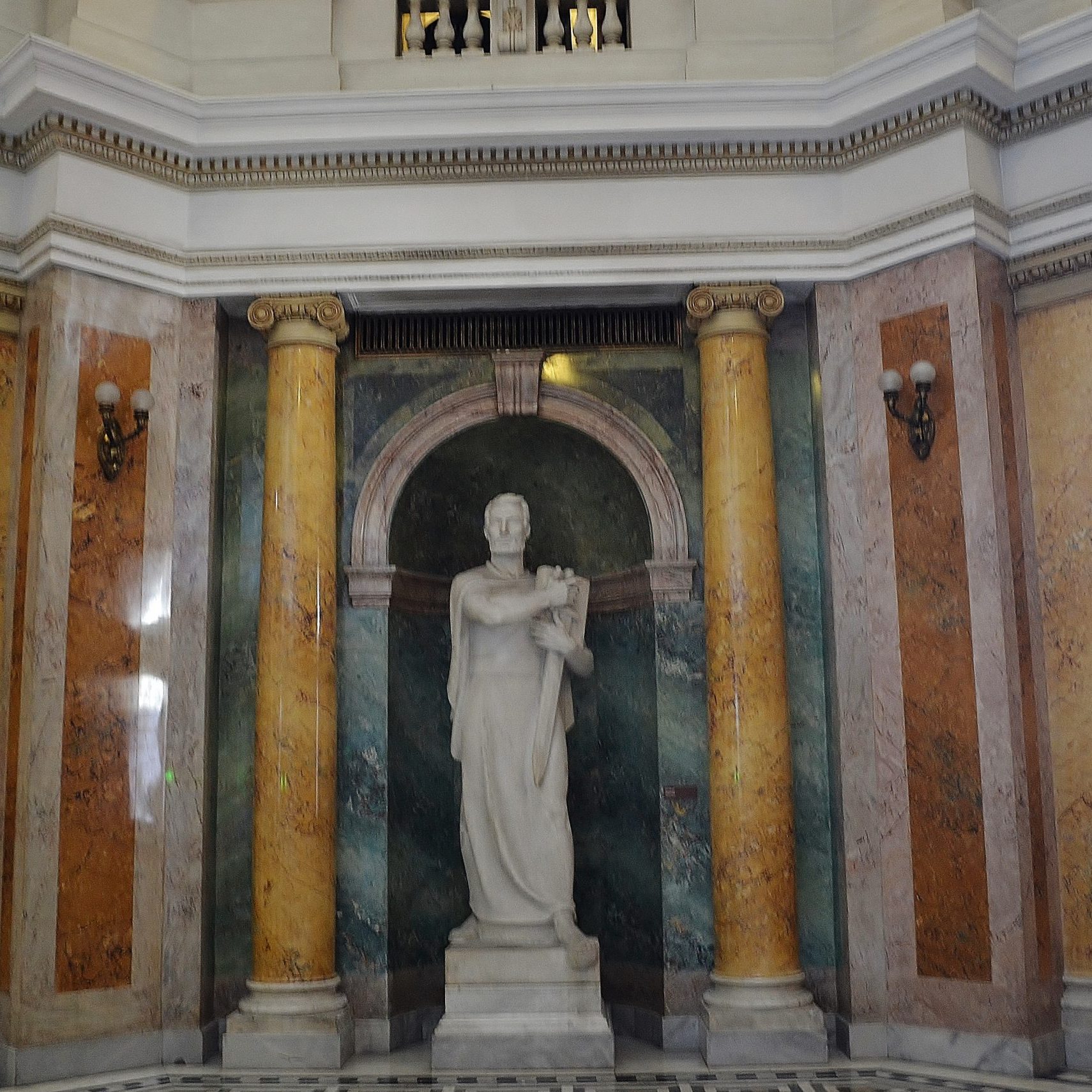
GREAT HALL
The second largest room in the Assembly is the great hall. Part of the interior of this room consists of women's sculptures, placed in the niches, ionic pillars and cared furniture. The eiling allows daylighting inside with a glass construction.

THE GREAT PLENARY HALL
The great planary hall is located in the right wing of the building. The parliamentary sessions of the Republic of Serbia take place here. The chamber is lit up with natural light. The oak benches are set in a semicircle. Opposite the semicircular wall is a spacious niche, on the seat of which was a portrait of King Peter II Karadjordjević. In the great plenary hall, there is also a memorial plaque to Ivo Andrić, winner of the Nobel Prize for Literature. The upstairs gallery is intended for guests of the Assembly.

THE SMALL PLENARY HALL
The small plenary hall is located in the left wing of the assembly building. The central wall of the Small Hall has a wooden lining, on which there is the crest of the Republic of Serbia. Above the wooden paneling is a monumental fresco, the Great Allegory of Work, painted by Mate Menegelo Rodić in 1937. Above the gallery are figures of men and women dressed in the traditional costumes of the Yugoslav nations.
DIPLOMATIC SALON
Once known as Prince Paul's salon, today it serves as a representative diplomatic salon. The furniture, which is in the style of Louis XV and Louis XVI, was designed by Nikolai Krasnov, as well as the original carpet that covered the floor of the salon, which has not been preserved. After the Second World War, the symbols of the Kingdom of Yugoslavia were removed, but today the royal portraits of members of the Obrenović and Karađorđević dynasties remain hung up on the walls.
LIBRARY
The library is located on the first floor, near the Diplomatic Salon. It is one of the most beautiful rooms in the Assembly, with its oak woodwork and furniture originally designed according to the designs of Nikolai Krasnov. In addition to the diplomatic and central hall, the library is one of the only spaces in which all of the original furniture is perserved.


Written by Ana Sarić
Translated by Maša Popesković


